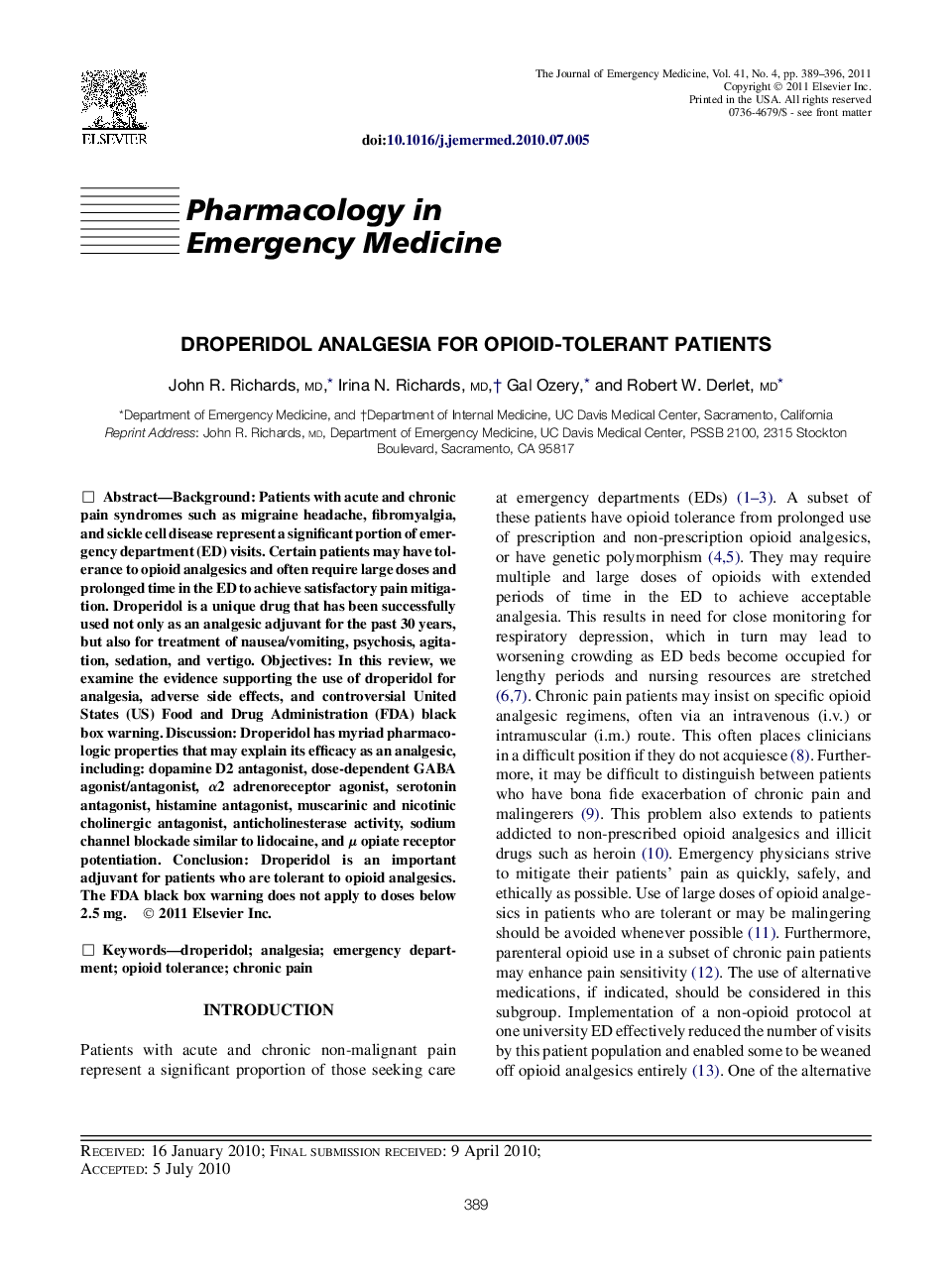| Article ID | Journal | Published Year | Pages | File Type |
|---|---|---|---|---|
| 3247577 | The Journal of Emergency Medicine | 2011 | 8 Pages |
BackgroundPatients with acute and chronic pain syndromes such as migraine headache, fibromyalgia, and sickle cell disease represent a significant portion of emergency department (ED) visits. Certain patients may have tolerance to opioid analgesics and often require large doses and prolonged time in the ED to achieve satisfactory pain mitigation. Droperidol is a unique drug that has been successfully used not only as an analgesic adjuvant for the past 30 years, but also for treatment of nausea/vomiting, psychosis, agitation, sedation, and vertigo.ObjectivesIn this review, we examine the evidence supporting the use of droperidol for analgesia, adverse side effects, and controversial United States (US) Food and Drug Administration (FDA) black box warning.DiscussionDroperidol has myriad pharmacologic properties that may explain its efficacy as an analgesic, including: dopamine D2 antagonist, dose-dependent GABA agonist/antagonist, α2 adrenoreceptor agonist, serotonin antagonist, histamine antagonist, muscarinic and nicotinic cholinergic antagonist, anticholinesterase activity, sodium channel blockade similar to lidocaine, and μ opiate receptor potentiation.ConclusionDroperidol is an important adjuvant for patients who are tolerant to opioid analgesics. The FDA black box warning does not apply to doses below 2.5 mg.
